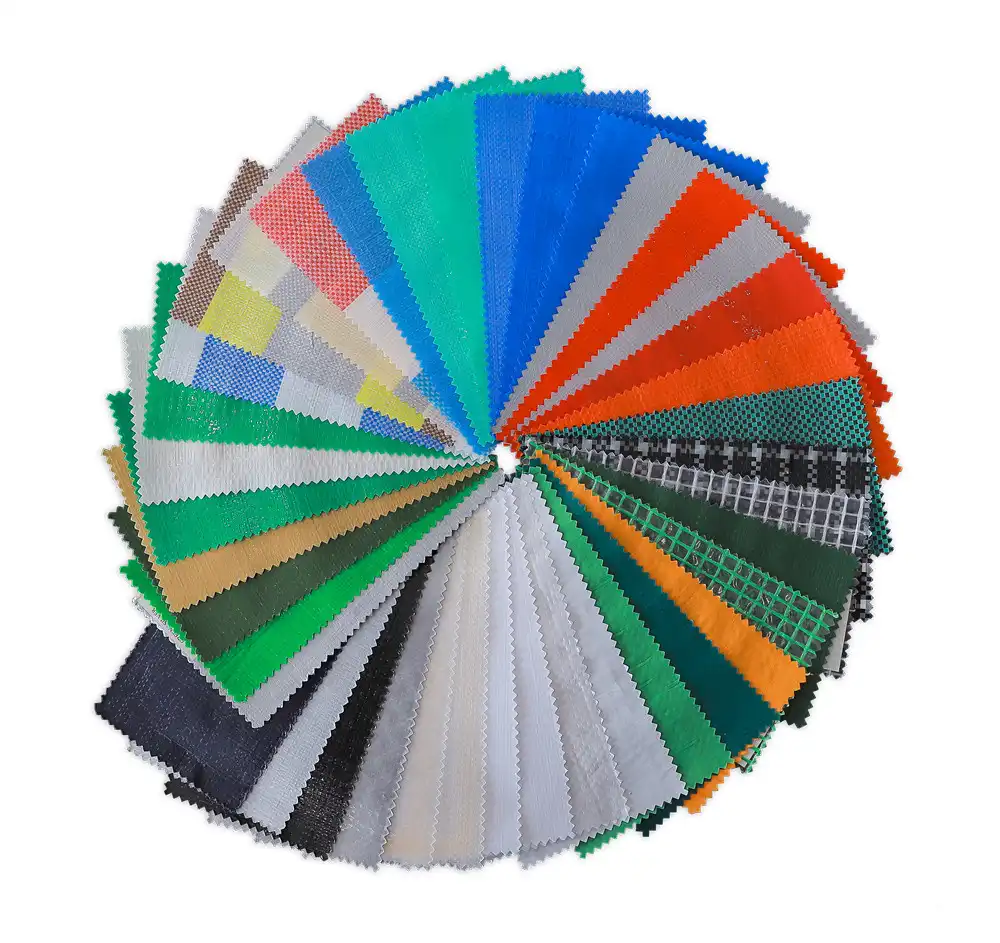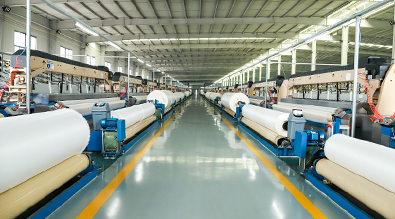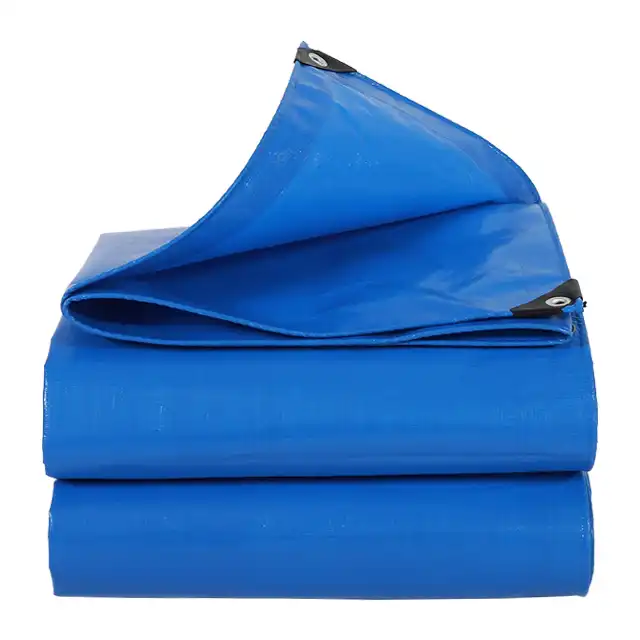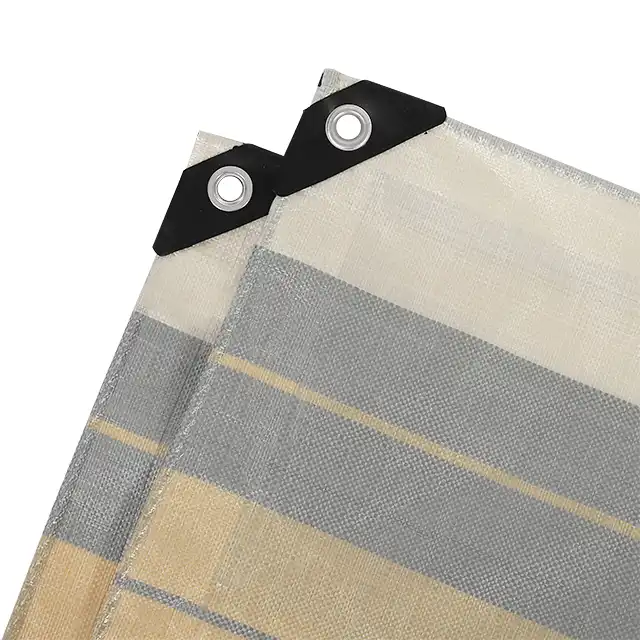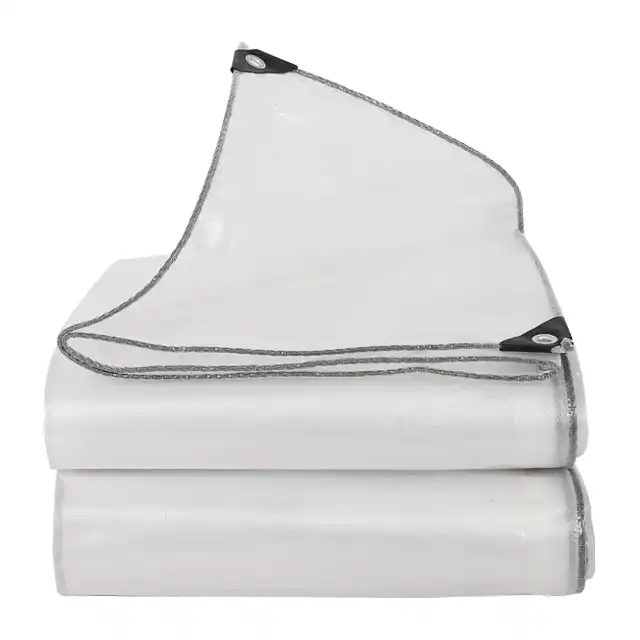Fire Resistant Tarpaulin vs Fire Retardant Tarpaulin: Key Differences Explained
When industrial accidents strike or construction sites face fire hazards, the difference between fire resistant and Fire Retardant Tarpaulin can mean the difference between minor damage and catastrophic loss. Many professionals struggle to understand these critical distinctions, leading to poor purchasing decisions that compromise safety standards. This comprehensive guide reveals the essential differences between fire resistant and Fire Retardant Tarpaulin options, helping you make informed choices that protect lives, property, and your business operations from devastating fire incidents.
Understanding Fire Retardant Tarpaulin Fundamentals
-
Chemical Treatment and Material Composition
 Fire Retardant Tarpaulin represents a specialized category of protective covering that undergoes specific chemical treatments or incorporates inherently flame-resistant materials during manufacturing. These tarpaulins significantly reduce the risk of fire spread by either self-extinguishing when exposed to flames or slowing down combustion through chemical or material properties. The manufacturing process involves saturating organic fabrics, often cotton duck or synthetic materials, with specialized retardant chemicals that have been rigorously tested to meet various international safety standards. The composition of Fire Retardant Tarpaulin typically includes HDPE woven fabric combined with LDPE coating, creating a robust barrier that maintains structural integrity under extreme heat conditions. Modern Fire Retardant Tarpaulin products feature advanced polymer treatments that activate when temperatures exceed specific thresholds, forming protective char layers that insulate the underlying material from further heat damage. These tarpaulins are engineered with specific weight classifications ranging from 85gsm to 180gsm, allowing users to select appropriate protection levels based on their operational requirements and environmental conditions.
Fire Retardant Tarpaulin represents a specialized category of protective covering that undergoes specific chemical treatments or incorporates inherently flame-resistant materials during manufacturing. These tarpaulins significantly reduce the risk of fire spread by either self-extinguishing when exposed to flames or slowing down combustion through chemical or material properties. The manufacturing process involves saturating organic fabrics, often cotton duck or synthetic materials, with specialized retardant chemicals that have been rigorously tested to meet various international safety standards. The composition of Fire Retardant Tarpaulin typically includes HDPE woven fabric combined with LDPE coating, creating a robust barrier that maintains structural integrity under extreme heat conditions. Modern Fire Retardant Tarpaulin products feature advanced polymer treatments that activate when temperatures exceed specific thresholds, forming protective char layers that insulate the underlying material from further heat damage. These tarpaulins are engineered with specific weight classifications ranging from 85gsm to 180gsm, allowing users to select appropriate protection levels based on their operational requirements and environmental conditions.
-
Performance Standards and Testing Protocols
Professional-grade Fire Retardant Tarpaulin must comply with stringent testing protocols including NFPA 701 standards, which measure ignition resistance after 12-second flame exposure. The testing evaluates flame spread, char length, and flaming residue to classify materials as B1 flame-retardant, B2 normally flammable, or B3 easily flammable building materials. These classifications directly impact the suitability of Fire Retardant Tarpaulin for specific applications, with B1-rated products offering superior protection for critical industrial environments. Quality Fire Retardant Tarpaulin undergoes extensive laboratory testing to verify self-extinguishing properties, temperature resistance thresholds, and durability under repeated flame exposure. The testing protocols simulate real-world fire scenarios, ensuring that Fire Retardant Tarpaulin maintains protective capabilities across diverse environmental conditions including high humidity, UV exposure, and temperature fluctuations. Manufacturing facilities employ advanced quality control systems with professional technicians monitoring every production stage to guarantee consistent Fire Retardant Tarpaulin performance.
Fire Resistant Tarpaulin Characteristics and Applications
-
Inherent Material Properties
Fire resistant tarpaulins distinguish themselves through inherent material properties rather than applied chemical treatments. These tarpaulins are manufactured from materials like silicone-coated fabric that naturally resist ignition when exposed to flames, withstanding high temperatures without melting or structural damage. The inherent resistance stems from the molecular structure of base materials, which maintain stability at elevated temperatures and resist combustion initiation. Unlike Fire Retardant Tarpaulin that relies on chemical treatments, fire resistant versions incorporate naturally non-flammable fibers such as aramid blends, fiberglass, or advanced synthetic polymers. These materials provide consistent protection without degradation over time, as their fire-resistant properties are integral to the material structure rather than surface treatments that may diminish with exposure to environmental elements. Fire resistant tarpaulins offer long-term reliability in permanent installations where consistent fire protection is essential. The manufacturing process for fire resistant tarpaulins involves sophisticated fiber engineering and weaving techniques that create dense, heat-resistant barriers. Advanced production facilities utilize specialized looms and coating machines to produce widths up to 5 meters without joints, eliminating potential weak points that could compromise fire protection. The resulting products feature reinforced edges, stable aluminum or brass eyelets, and consistent thickness throughout the entire tarpaulin surface.
-
Durability and Environmental Performance
Fire resistant tarpaulins excel in harsh environmental conditions, maintaining protective capabilities across extreme temperature ranges from arctic conditions to desert heat. The inherent material properties provide consistent performance without requiring periodic retreatment or replacement due to chemical degradation. These tarpaulins resist UV damage, chemical exposure, and mechanical stress while maintaining their fire-resistant characteristics throughout their operational lifespan. The durability advantage of fire resistant tarpaulins becomes particularly evident in long-term outdoor applications where Fire Retardant Tarpaulin treatments might deteriorate. Advanced polymer compositions resist shrinkage, cracking, and color fading while maintaining flexibility in sub-zero temperatures. This arctic flexibility ensures reliable deployment and storage in diverse climatic conditions, making fire resistant tarpaulins ideal for emergency response applications and permanent protective installations.
Key Technical Differences Between Fire Retardant and Fire Resistant Tarpaulins
-
Protection Mechanisms and Response Characteristics
The fundamental difference between Fire Retardant Tarpaulin and fire resistant variants lies in their protection mechanisms and flame response characteristics. Fire retardant tarps are treated to be slow-burning and self-extinguishing rather than being made from inherently nonflammable materials, meaning they can still catch fire when directly exposed to flames but will slow the burn time. This distinction is crucial for safety planning and risk assessment in industrial applications. Fire Retardant Tarpaulin achieves protection through chemical reactions that occur when exposed to heat, creating endothermic processes that absorb energy and reduce flame temperature. The chemical treatments release water vapor or inert gases that dilute combustible gases and create protective barriers around the material. However, these protective mechanisms have limitations based on flame intensity, exposure duration, and environmental conditions that may affect chemical reactivity. Fire resistant tarpaulins provide protection through material properties that resist ignition initiation, maintaining structural integrity even under direct flame contact. The inherent resistance means these materials require significantly higher temperatures to reach ignition points, and they typically char rather than burn when exposed to extreme heat. This fundamental difference makes fire resistant tarpaulins more suitable for applications requiring absolute fire protection, while Fire Retardant Tarpaulin serves effectively in applications where flame spread control is the primary concern.
-
Cost-Benefit Analysis and Selection Criteria
When evaluating Fire Retardant Tarpaulin versus fire resistant options, cost considerations extend beyond initial purchase prices to include lifecycle costs, replacement frequency, and risk mitigation values. Fire Retardant Tarpaulin typically offers lower initial costs but may require more frequent replacement as chemical treatments lose effectiveness over time. The total cost of ownership includes potential retreatment expenses, storage requirements, and safety compliance costs. Fire resistant tarpaulins command higher initial investments but provide superior long-term value through extended service life, consistent performance, and reduced maintenance requirements. The inherent protection eliminates concerns about treatment degradation, chemical compatibility issues, or environmental impact from treatment chemicals. For critical applications where fire safety cannot be compromised, the additional investment in fire resistant materials often proves economically justified through risk reduction and operational reliability. Professional procurement decisions must consider application-specific requirements, environmental conditions, regulatory compliance needs, and total cost implications. Fire Retardant Tarpaulin suits applications with moderate fire risk, temporary installations, or budget-constrained projects where basic flame spread protection suffices. Fire resistant tarpaulins serve high-risk environments, permanent installations, or applications where consistent, reliable fire protection is non-negotiable for safety and regulatory compliance.
Industrial Applications and Use Cases
-
Construction and Building Site Protection
Construction environments present unique fire hazards requiring carefully selected protective covering solutions. Fire Retardant Tarpaulin serves effectively in general construction applications where welding, cutting, and heating operations create spark and flame risks. The self-extinguishing properties provide adequate protection for equipment covers, material storage, and temporary weather barriers in standard construction scenarios. Heavy-duty construction projects involving petrochemical facilities, refineries, or high-risk industrial construction benefit from fire resistant tarpaulins that provide absolute protection against ignition. These applications demand materials that maintain integrity during sustained flame exposure, preventing fire spread to critical equipment or materials. The superior heat resistance and structural stability of fire resistant tarpaulins ensure continued protection even under extreme conditions that would overwhelm Fire Retardant Tarpaulin systems. Specialized construction applications include emergency repairs, hazardous material containment, and critical infrastructure protection where fire safety cannot be compromised. Fire resistant tarpaulins provide reliable containment barriers for chemical spills, emergency weather protection for sensitive operations, and temporary facility construction in high-risk environments. The consistent performance characteristics eliminate concerns about treatment effectiveness or environmental degradation that could compromise safety.
-
Manufacturing and Industrial Facility Protection
Manufacturing facilities utilizing Fire Retardant Tarpaulin benefit from versatile protection suitable for general industrial applications including equipment covers, material protection, and process isolation barriers. The chemical treatment provides effective flame spread control for standard manufacturing environments where fire risks exist but do not require absolute ignition prevention. Cost-effective Fire Retardant Tarpaulin solutions serve warehouses, distribution centers, and general manufacturing facilities effectively. High-risk manufacturing operations involving flammable chemicals, high-temperature processes, or explosive materials require fire resistant tarpaulins that provide absolute ignition protection. These applications include petroleum processing, chemical manufacturing, aerospace production, and electronics manufacturing where even brief flame exposure could trigger catastrophic consequences. The inherent material properties ensure consistent protection regardless of environmental conditions or treatment degradation concerns. Specialized manufacturing applications benefit from custom Fire Retardant Tarpaulin solutions engineered for specific operational requirements. Advanced manufacturing facilities utilize tarpaulins with tailored properties including chemical resistance, static dissipation, and temperature stability while maintaining fire protection characteristics. The combination of fire safety and specialized performance features enables comprehensive protection for complex industrial operations.
Quality Standards and Certification Requirements
-
International Safety Standards Compliance
Professional Fire Retardant Tarpaulin manufacturers must demonstrate compliance with comprehensive international safety standards including NFPA 701, CPAI-84, and European fire safety regulations. These standards establish minimum performance criteria for flame spread, heat release, smoke generation, and toxic gas emission during fire exposure. Compliance verification requires extensive testing by accredited laboratories using standardized protocols that simulate real-world fire scenarios. ISO 9001:2015 certification demonstrates manufacturing quality management systems capable of producing consistent Fire Retardant Tarpaulin products meeting specified performance criteria. The certification process involves comprehensive auditing of production processes, quality control systems, testing procedures, and documentation practices. Certified manufacturers maintain rigorous quality monitoring throughout the entire production process, ensuring every Fire Retardant Tarpaulin meets established safety and performance standards. Third-party testing laboratory validation provides independent verification of Fire Retardant Tarpaulin performance characteristics, eliminating manufacturer bias and ensuring objective assessment of safety properties. Accredited laboratories conduct comprehensive testing including flame spread rates, self-extinguishing times, temperature resistance, and durability under repeated flame exposure. The resulting test reports provide detailed performance data essential for regulatory compliance and risk assessment purposes.
-
Manufacturing Quality Assurance
Advanced manufacturing facilities producing high-quality Fire Retardant Tarpaulin employ sophisticated quality assurance systems throughout the entire production process. Modern production lines utilize computer-controlled extruding machines, precision water-jet looms, and professional coating equipment to ensure consistent material properties and dimensional accuracy. Quality control systems monitor yarn thickness, fabric density, coating uniformity, and finished product specifications to guarantee performance consistency. Professional manufacturing operations maintain comprehensive quality documentation including material certifications, process parameters, testing results, and batch traceability records. This documentation enables precise quality control and facilitates rapid response to any performance issues or customer requirements. Advanced facilities utilize statistical process control methods to i dentify trends and prevent quality variations before they affect finished products. The integration of advanced testing equipment enables real-time quality monitoring during Fire Retardant Tarpaulin production. Automated testing systems verify flame resistance properties, mechanical strength, waterproof characteristics, and dimensional accuracy throughout production runs. This comprehensive quality assurance approach ensures that every Fire Retardant Tarpaulin meets specified performance criteria and safety standards.
Conclusion
Understanding the critical differences between fire resistant and Fire Retardant Tarpaulin is essential for making informed safety decisions that protect lives and property. Fire resistant tarpaulins offer inherent material protection suitable for high-risk environments requiring absolute ignition prevention, while Fire Retardant Tarpaulin provides cost-effective flame spread control through chemical treatments ideal for general industrial applications. The selection decision must consider specific application requirements, environmental conditions, regulatory compliance needs, and long-term cost implications to ensure optimal protection and value.
Cooperate with Linyi Shengde Plastic Co., Ltd.
As a leading China Fire Retardant Tarpaulin factory established in 2003 with registered capital of CNY 80 million, Linyi Shengde Plastic Co., Ltd. has earned recognition as a premier China Fire Retardant Tarpaulin supplier serving over 30 countries worldwide. Our comprehensive manufacturing capabilities include 30+ high-tech extruding machines, 400+ Korea-imported water-jet looms, and advanced coating systems producing up to 100+ tons daily of High Quality Fire Retardant Tarpaulin. As a trusted China Fire Retardant Tarpaulin manufacturer with ISO 9001:2015 certification and partnerships with UNHCR, IOM, ICRC, and UNICEF, we offer competitive Fire Retardant Tarpaulin price and Fire Retardant Tarpaulin for sale through our extensive China Fire Retardant Tarpaulin wholesale network. Contact us at info@shengdetarp.com for customized solutions.
FAQ
Q: What is the main difference between fire resistant and fire retardant tarpaulins?
A: Fire resistant tarpaulins are made from inherently non-flammable materials, while fire retardant tarpaulins are chemically treated to slow burning and self-extinguish.
Q: How long do fire retardant treatments last on tarpaulins?
A: Fire retardant treatments typically maintain effectiveness for 2-5 years depending on environmental exposure, but inherent fire resistant materials provide permanent protection.
Q: Which type offers better protection for industrial applications?
A: Fire resistant tarpaulins provide superior protection for high-risk environments, while fire retardant options suit general industrial applications with moderate fire risks.
Q: Are fire retardant tarpaulins completely fireproof?
A: No, fire retardant tarpaulins are not fireproof but are designed to resist ignition, slow burning, and self-extinguish when flame sources are removed.
References
1. "Fire Safety Standards for Protective Fabrics and Materials" - National Fire Protection Association, Technical Committee on Fire Tests
2. "Flame Retardant Treatments in Industrial Textiles: Performance and Applications" - Dr. Sarah Mitchell, Industrial Safety Research Institute
3. "Comparative Analysis of Fire Resistant Materials in Construction Applications" - International Association of Fire Safety Engineering, Standards Committee
4. "Chemical vs. Inherent Fire Protection: Material Science Perspectives" - Professor James Chen, Materials Engineering Department, Technical University
